Actionable vs. Vanity Video Metrics: How to Understand YouTube Analytics
Originally published: November 20, 2022 04:26:36 PM, updated: November 20, 2022 07:40:31 PM

Are you trying to grow your business and acquire more potential customers through YouTube? You'll need a way to track performance over time and stand out from the crowd.
YouTube Analytics provides real-time data to let you know exactly what's happening.
By tracking this vital information, you can transform the entire course of your business, adjust your YouTube marketing strategy, and increase conversions.
There are several metrics in the YouTube Analytics dashboard, but they're not all built equally. And that's why knowing how to differentiate between vanity and actionable metrics is the key to success.
This blog post will discuss the difference between actionable and vanity metrics and how to use them for your YouTube channel's success.
Why YouTube Analytics is Important for Growth
With more than 2 billion monthly active users and 5 billion YouTube watched videos per day, YouTube is one of the most popular platforms for streaming video content.
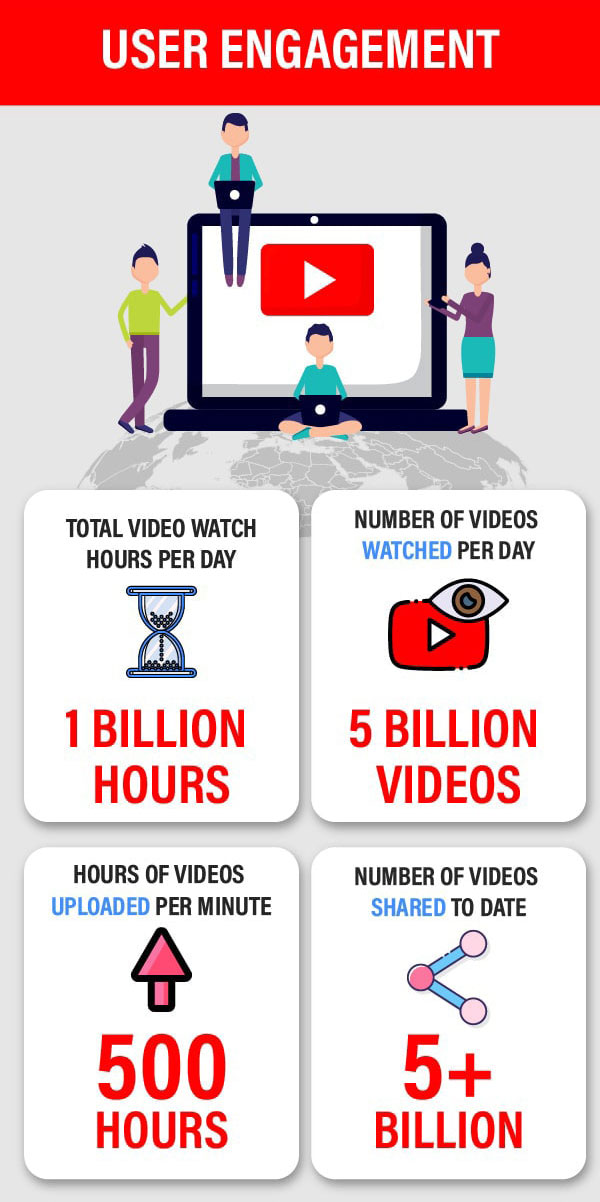
So if you're looking to bring visibility to your business's YouTube channel and capture the attention of potential customers, it's no surprise the competition will be stiff!
The only way to make improvements and track progress at every step of the customer journey is through YouTube Analytics– it's crucial for your channel's growth.
Continuously analyzing your YouTube efforts will help you understand what's working for your business and what needs adjustments. You'll also be able to tap into how users find your channel and why they leave.
What is Actionable and Vanity Metrics on YouTube Analytics?
As we've mentioned, not all metrics are created equally. Surface-level data only conflates the bigger picture and may even lead you astray if you're unaware of its implications.
A vanity metric looks nice on paper and makes you feel good but doesn't provide solid value from which you can make decisions.
Let's take a YouTube-specific example– consider the 'Views' metric.
A week after you've uploaded your YouTube video, views are racking up, and let's be honest– it feels great to see! But this metric isn't helpful in decision-making as it doesn't tell you whether viewers stayed for the entirety of your video or even how your content resonated.
On the other hand, actionable metrics show an accurate picture of your business. These critical data insights tie directly into your business goals and let you know whether any improvements are needed (e.g., adding SEO for YouTube to increase content relevance).
For example, the 'Watch Time' metric will show you the total time a viewer spends looking at your YouTube video. With this insight in hand, you'll have a better idea of what content is most engaging and best to focus on for future videos.
Why Understanding Actionable Metrics is Important for Your Channel
Actionable metrics help you track the performance, objectives, and goals of your YouTube business.
They are also comparative and are best expressed as a ratio or rate. Here are some critical actionable metrics to measure the success of your YouTube video marketing.
Revenue
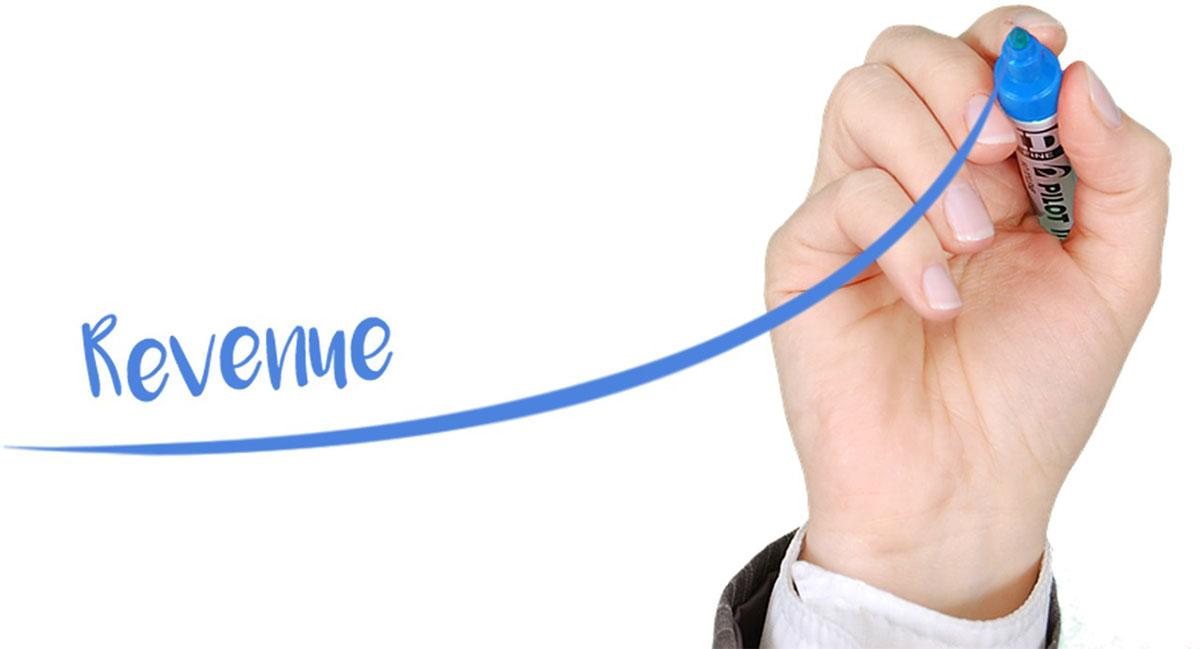
If you're trying to generate sales from YouTube Ads (e.g., prompting viewers to click on your eCommerce website link and purchase your product), you'll need to monitor the 'Revenue' metric closely to know your profits over time.
Through YouTube Analytics, you'll have the ability to check key revenue-related insights such as:
- Total revenue
- Monthly estimated revenue
- Number of transactions
- Net profit
- Monetized playbacks
- Payback-based CPM (cost per one thousand views)
- Top-earning videos
- Revenue sources
Watch Time
This actionable metric lets you keep tabs on the average and total watch times of every video on your YouTube channel. And by tracking this metric over time, you can decide what's worth promoting and what type of video content to create in the future.
Knowledge is power– knowing what resonates with your audience will help you create relevant content that may result in higher search rankings on YouTube's search engine.
In fact, videos or channels with higher watch times are perceived as engaging and high-quality by YouTube's algorithm. The higher the watch time, the greater the chances your videos will appear in YouTube's search results.
Impression Clickthrough Rate
This key metric will tell you how many viewers clicked on the play button after seeing it in their feed or suggestions. This will give you a better gauge of how engaging your videos may seem at first glance,
More specifically, you'll gain insight into how well your video title and thumbnail perform.
For example, if you have 100,000 impressions on your video but only 500 user clicks, it's a sign to evaluate the effectiveness of your thumbnail and video title. Perhaps your title needs refining, or it could even be an obtrusive graphic element on your thumbnail that's visually unappealing or difficult to read.
Average Percentage Viewed
The average percentage viewed metric shows how much of a video was watched by all viewers. For example, if your video was four minutes long and the average percentage viewed was 25%, it means that most of your viewers watched one minute of your video before exiting.
Use this metric to understand how engaging your video content is and how long it usually holds your viewers' attention.
Similar to watch time, videos or channels with higher 'average percentage viewed' metrics rank better in search engine results, as YouTube's algorithm considers it entertaining content.
Real-Time Report
If you're posting videos regularly, you'll want to have early insight into how your videos perform just after it is published.
The real-time report metric collates the immediate views of your videos as soon as they're uploaded. Aside from immediate data tracking, you can compare your video's impact from the first 60 minutes it was published and its performance after 48 hours.
When a YouTube video generates traffic during the first 24 to 48 hours of publishing, YouTube's algorithm gives it a +point and shows it to a larger audience. But if there aren't many views or engagements within the first day or two, you'll risk being overlooked by the algorithm.
Pro-Tip: Consolidate your YouTube actionable metrics by using a KPI dashboard. That way, you'll have all critical metrics in one place and at a moment's glance for easy reference.
Why Understanding Vanity Metrics Is Important for Your Channel
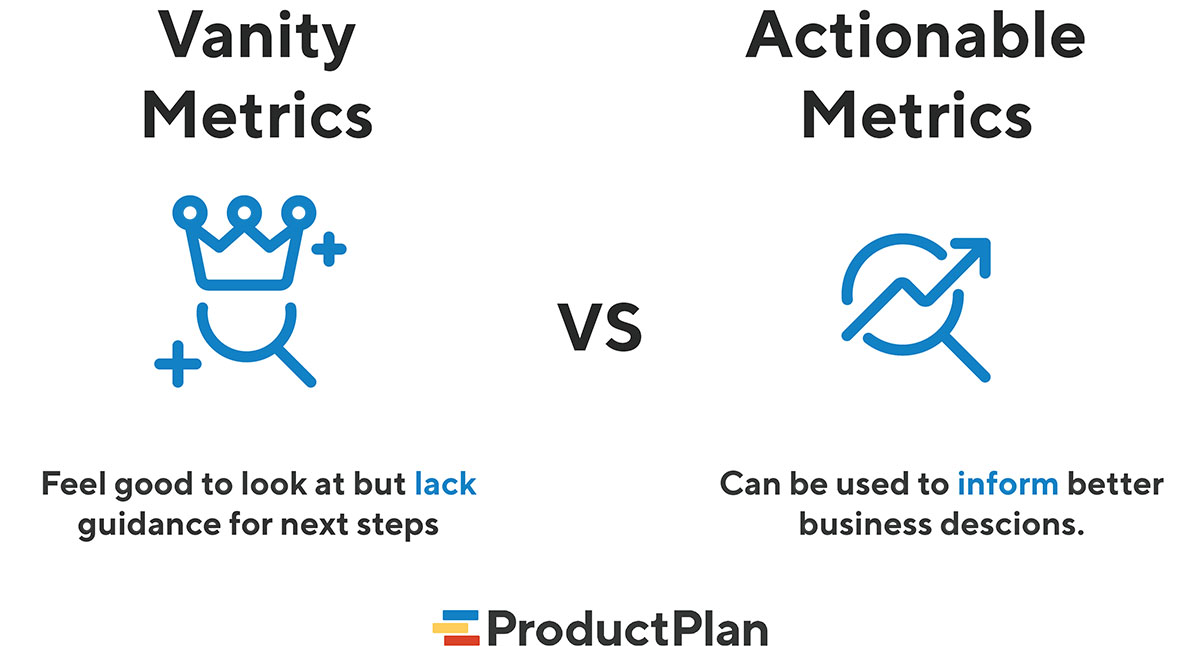
As we've described, vanity metrics make your channel appear successful, but it doesn't necessarily lead to a tangible outcome and shouldn't be used to guide decision-making.
For example, a channel with one million subscribers doesn't mean anyone is buying your products or engaging with your content.
Here are a few examples of YouTube vanity metrics and how to contextualize them.
Views
A high number of views on your YouTube video is exciting and feels good. Your content may be eye-catching at first glance and inclines users to click. However, this data can often be misleading as YouTube shows the total number of views, including repeated views from the same users.
From a growth-oriented perspective, this metric can't contribute to your channel's success because you'll know nothing about your audience's engagement level or how your content was received.
'Views' merely means a certain number of people played your video indefinitely. But did they watch till the end or follow through on a call to action? We don't know.
Unique Viewers
In the 'Audience' section of your YouTube analytics report, 'Unique Viewers' is a vanity metric that shows how many new users have viewed your content within a specific time frame. Similar to 'Views,' 'Unique Viewers' won't give you actionable insights such as engagement rates or conversions.
There's an important point to note, though– unlike the 'View' metric, 'Unique Viewers' doesn't include repeat viewers.
Because of this, you can derive some actionable data from this metric because you can compare unique-viewer data in reference to your subscribers.
If your channel gets 10,000 unique views every day, but approximately 90 percent of them aren't your subscribers, this can mean that your subscribers aren't watching your videos. It also means that many of your viewers aren't subscribing to your channel.
In this case, try to keep subscribers engaged by optimizing your videos and creating relevant content.
Subscribers
Often, a YouTube channel with many subscribers looks successful from the outside. Yet, this is also a vanity metric that shouldn't impact decision-making. Think about it– users may subscribe and never watch your new videos.
Similar to the above vanity metrics, a high number of subscribers doesn't mean high engagement or that there'll be any action is taken (e.g., clicking on your website link).
While this metric in isolation doesn't provide any solid insight, a growing subscriber rate (alongside growing actionable metrics such as sales) may mean your YouTube content is impactful and heading in the right direction.
How to Track YouTube Metrics from the YouTube Analytics Dashboard
When it comes to tracking the performance of your YouTube channel, you've got a few options.
Use the YouTube Analytics Dashboard
Here are the steps to follow to track data right within the YouTube platform.
- Log in to your YouTube channel
- Click on the profile icon at the top right corner
- Go to the YouTube Studio (it may be Creator Studio for you if you have the old version

- Click on YouTube Studio to open the channel's Analytic dashboard
- Click on 'Analytics' present on the left side of the menu.
This will show metrics like 'Overview,' 'Reach,' 'Engagement,' 'Audience,' and 'Revenue.'
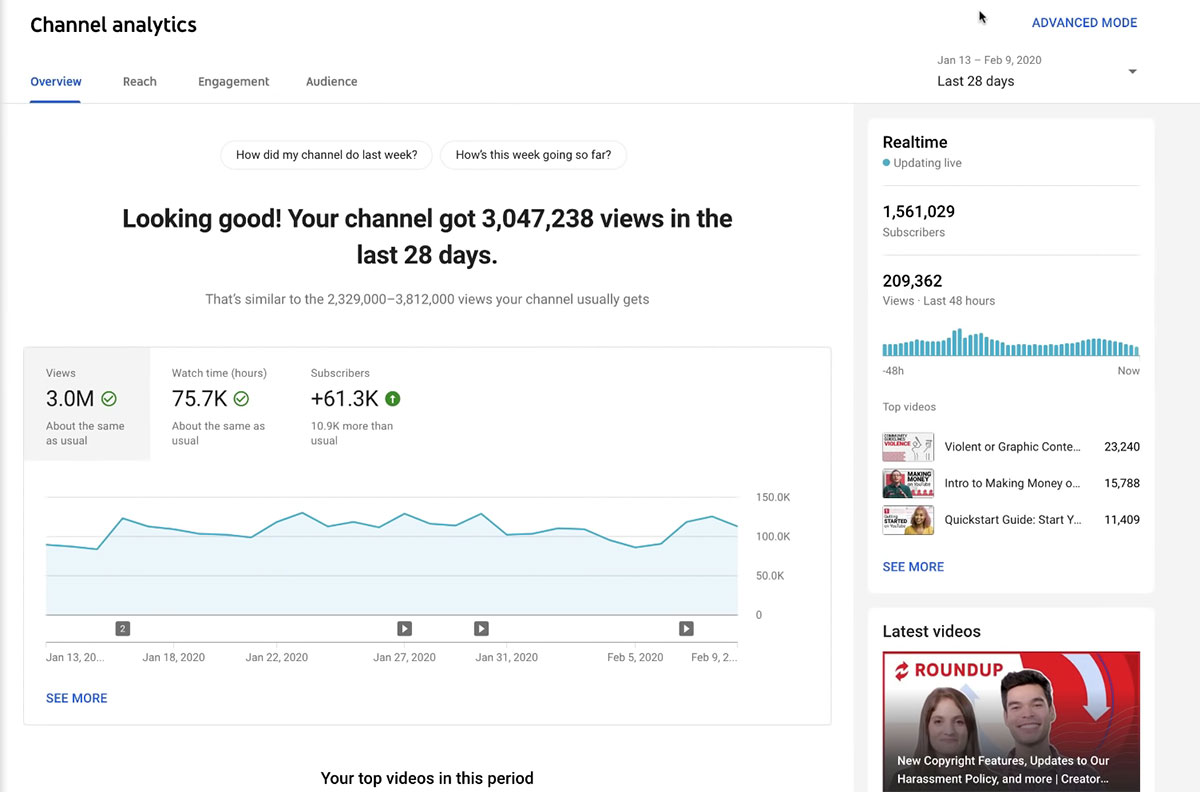
Note: The YouTube Analytics Advanced mode has a 'Compare to' feature where you can get data to compare your channel's growth over the years.
External Tools to Track YouTube Analytics
Here are some tools to consider if you're looking for extra support to track overall YouTube performance.
Statusbrew
With an easy interface and all exportable widgets, Statusbrew offers 130+ measurable metrics. It lets you sync comments on your videos from multiple YouTube channels, and you can manage them from one unified inbox.
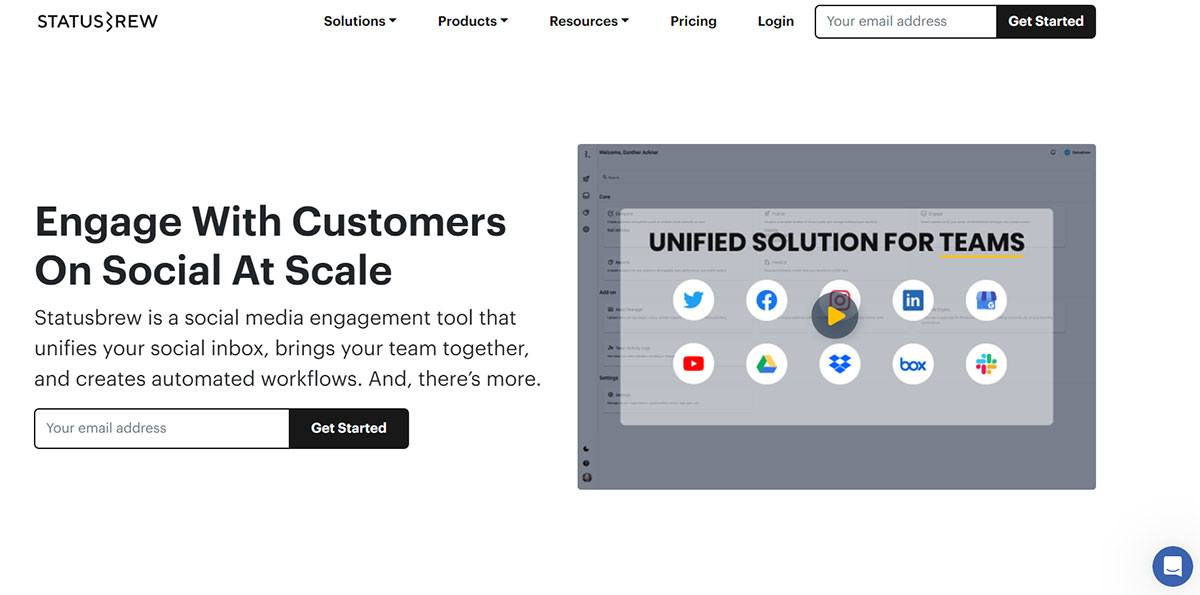
Statusbrew's standard plan starts from $129/mo and offers a free trial.
Socialinsider
Most businesses promoting their YouTube products are competing for the same audience. Socialinsider helps you track your competitors' digital marketing campaigns and strategies.
Using this tool effectively allows you to examine content performance and know how your competitor's videos perform. This platform also handles analytics for Facebook, Twitter, and Instagram.
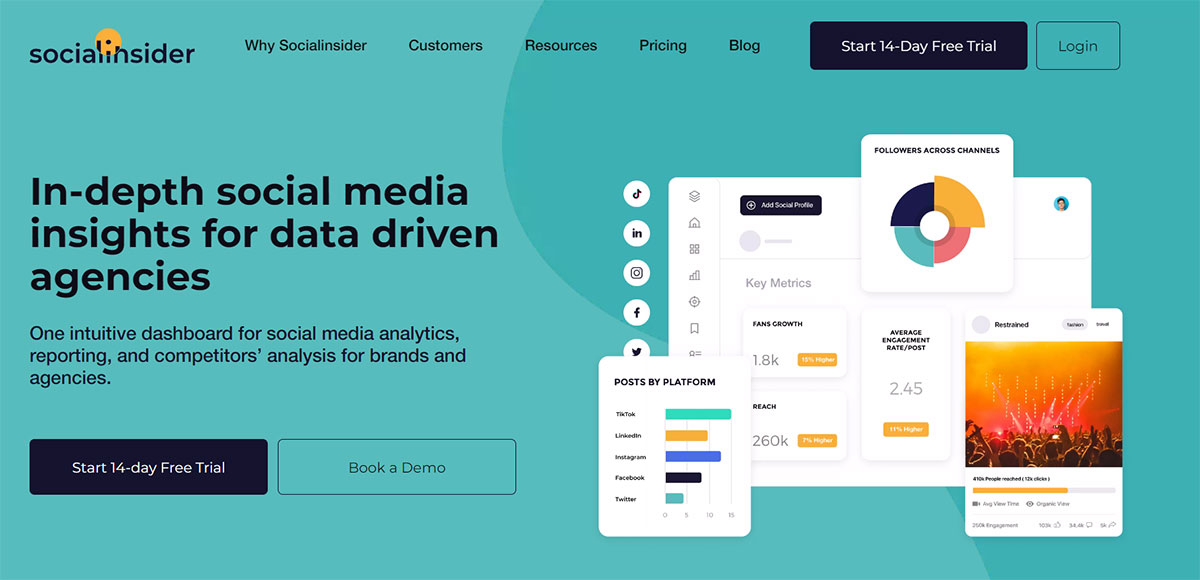
Socialinsider's starter plan starts from $99/month.
Unbox Social
This analytical tool helps you improve your strategy for your video content. Along with YouTube, this efficiently works for Facebook, Instagram, and Twitter analytics.
Unbox Social offers insight into subscribers, audiences, demographics, card clicks, video shares, and more. This analytics tool will also tell you the best time to post your videos, which is an added plus.
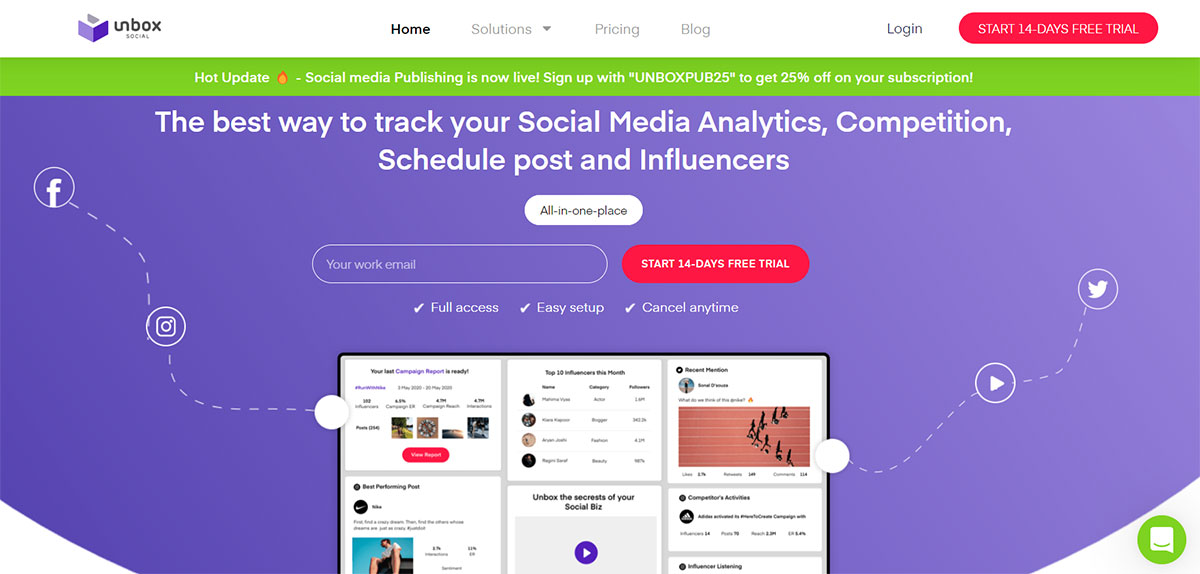
Unbox Social has several plans and starts from $9/month.
How to Create a YouTube KPI Dashboard
An easy way to track all your analytics is by creating a YouTube KPI dashboard. That way, you'll be able to reference metrics in a visually appealing, intuitive way.
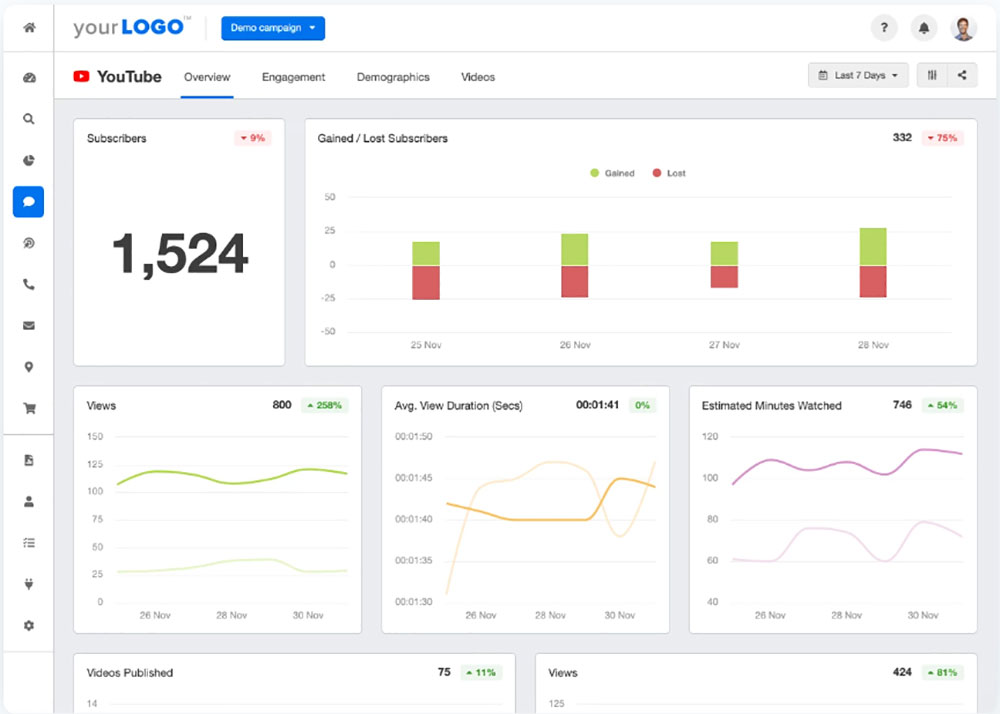
An automated reporting tool like AgencyAnalytics comes in handy and saves you time each month. It's as easy as:
Linking your YouTube and AgencyAnalytics Accounts > Dragging and dropping your metrics into a fully customizable dashboard.
This real-time data lets you easily view your YouTube channel's performance, and you can customize your dashboard to include metrics from other marketing campaigns.
Summary & Key Takeaways
Many metrics are available on the YouTube Analytics dashboard, but you shouldn't use all of them to make long-term, strategic decisions.
In a nutshell, actionable metrics are the ones that actually tie into your business objectives and what you should focus on. On the other hand, vanity metrics offer stand-alone data points that won't tell you how your YouTube channel is performing in a meaningful way.
While these are surface-level metrics, use them with actionable insights to see the complete picture of what's happening. That way, you can arm yourself with important information and drive your YouTube channel toward success.
Join over 130,000 SEO and Google Ads experts. We provide a community to help you engage and learn from industry experts and influencers. Join Now
What if your entire business could run itself — and your work hours got shorter?